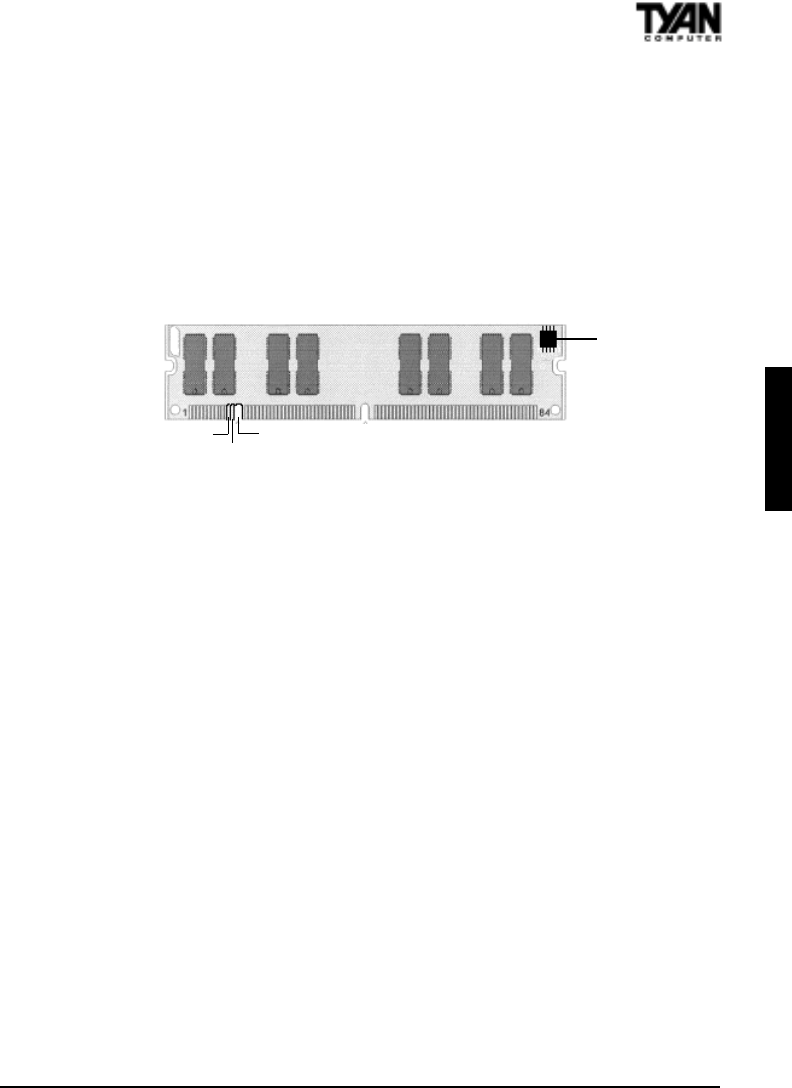
http://www.tyan.com
35
ONBOARD
Frequently Asked Questions
Q: Why don’t I get a display after I put in my old DIMM module?
A: The 440BX chipset requires the memory manufacturer to program an
EEPROM chip with SPD (Serial Presence Detection) on the module in order for
the BIOS to program the 440BX’s timing registers properly. Your DIMM may
not have the EEPROM chip on the module, or the EEPROM may not contain
the correct program. Check with your memory vendor for details. The figure
below shows a DIMM module with an EEPROM chip.
Q: My system sometimes becomes unstable. How should I check the system?
A: The first thing to do is to check and see if you have any device conflict in
address, IRQ, or DMA. If you are using Windows 95, the Device Manager is a
good place to start. Please consult your operating system manual for details.
Second of all, slowing down the memory timing in the BIOS’s chipset setup
section will help the situation, as well. Many memory modules are not suitable
for high performance systems and are probably the main source of your
problem.
Q: Can I use EDO DIMMs on this motherboard?
A: No. The Intel 440BX AGPset does not support EDO memory. The 440BX
AGPset supports bus speeds of 100MHz, and EDO memory does not. You
must use SDRAM (which does support 100MHz bus speeds) on this board.
Q: What is AGP?
A: AGP (Accelerated Graphics Port) is a new bus architecture for 3D graphics.
The AGP slot eliminates the PCI bandwidth bottleneck by bypassing the PCI
interface and accessing the system memory directly. Currently, the AGP
supports 1X and 2X modes, which yield bandwidths of 264MB/s (at 33MHz
bus speed) and 533MB/s (at 66MHz bus speed), respectively. Compare this
with the mere 132MB/s (at 33MHz bus speed) that you get with the PCI bus.
RFU
Buffered
Unbuffered
168-pin DIMM
EEPROM


















